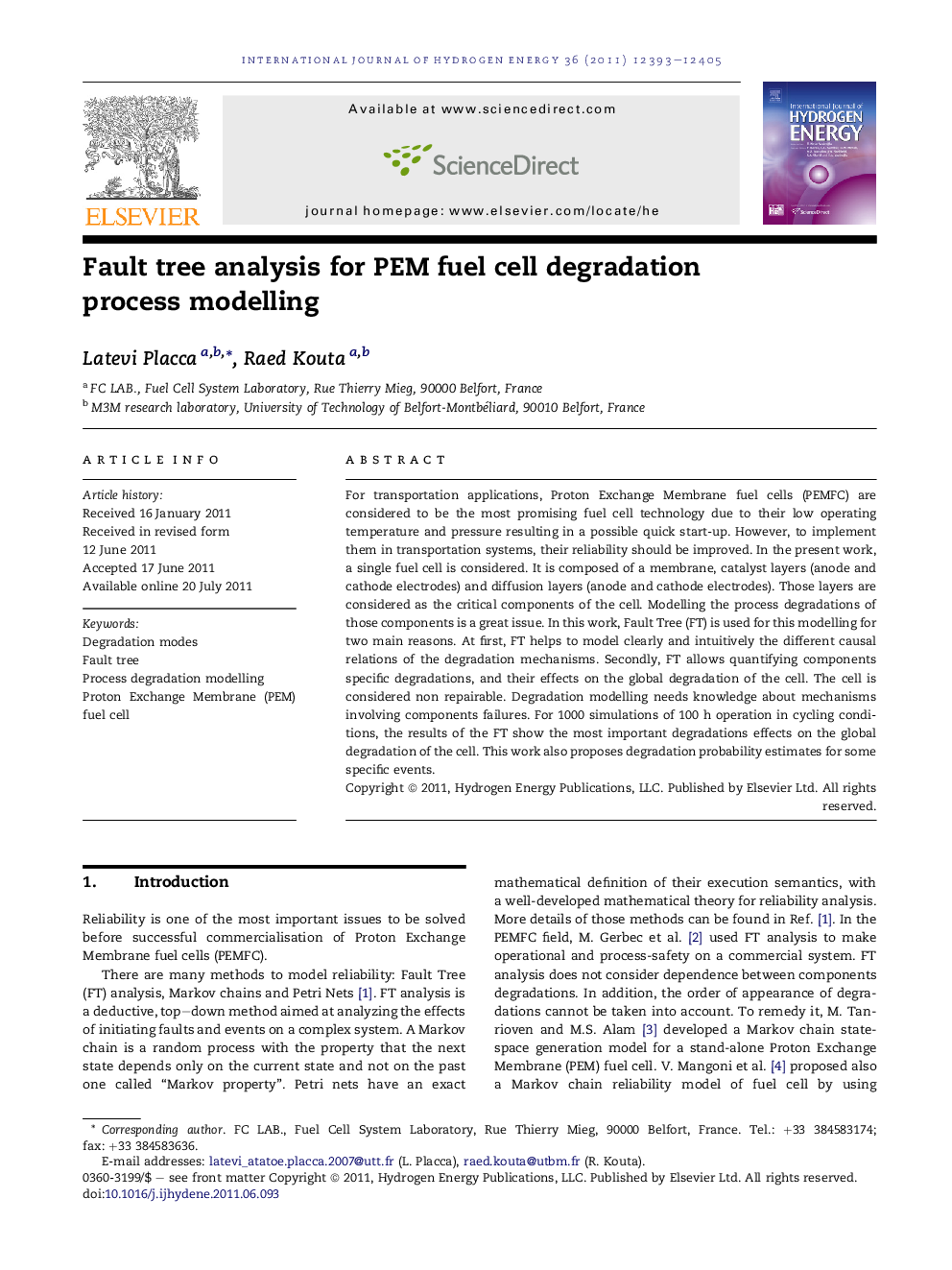| Article ID | Journal | Published Year | Pages | File Type |
|---|---|---|---|---|
| 1282443 | International Journal of Hydrogen Energy | 2011 | 13 Pages |
For transportation applications, Proton Exchange Membrane fuel cells (PEMFC) are considered to be the most promising fuel cell technology due to their low operating temperature and pressure resulting in a possible quick start-up. However, to implement them in transportation systems, their reliability should be improved. In the present work, a single fuel cell is considered. It is composed of a membrane, catalyst layers (anode and cathode electrodes) and diffusion layers (anode and cathode electrodes). Those layers are considered as the critical components of the cell. Modelling the process degradations of those components is a great issue. In this work, Fault Tree (FT) is used for this modelling for two main reasons. At first, FT helps to model clearly and intuitively the different causal relations of the degradation mechanisms. Secondly, FT allows quantifying components specific degradations, and their effects on the global degradation of the cell. The cell is considered non repairable. Degradation modelling needs knowledge about mechanisms involving components failures. For 1000 simulations of 100 h operation in cycling conditions, the results of the FT show the most important degradations effects on the global degradation of the cell. This work also proposes degradation probability estimates for some specific events.
► A complete fault tree for fuel cell degradations process modelling. ► Reliability analysis in real fuel cell operating conditions for transportation means. ► Identification of the most important components degradations and their effects on the global fuel cell degradation.
